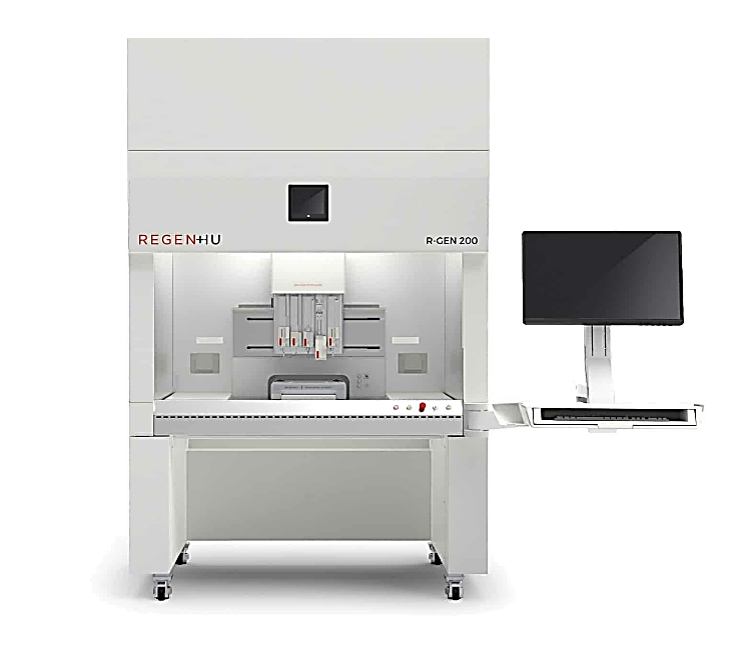



 Cascia
Cascia

A rapidly emerging group of medical innovations are commonly referred to as
bioprinting. These innovations allow preparation of customized
implants and treatments through the use of multidimensional printing of
biocompatible materials, such as restorable gels and plastics, and living
cells themselves. Some of these materials are photocured, either by
lasers or other high-intensity light sources, and development of advanced
robotics systems allow printing of patient specific implants in the
operating room.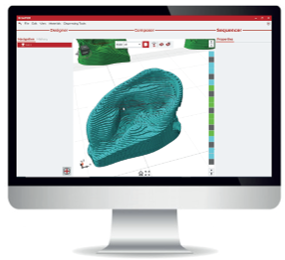
The robot pictured at the left is fully enclosed in a biosafety cabinet to provide a controlled environment for the preparation of the implants. The computer on the right allows the medical scientist to design an implant from scratch, or to import graphical data directly from MRI or CT scanners to produce an implant suitable for filling a bone void or other injury.
Use of resorbable thermoplastics mixed with various materials allows use of printed implants that are highly porous, which is vital for the proper engraftment of stem cells, and which degrade over time. Unlike metal implants, such as titanium, a resorbable implant does not provide as much "stress shielding" which ultimately weakens the bone or other structure. When fully resorbed, nothing is left behind except fully healed tissue.
The printing robot works with a large number of materials, both natural and artificial, allowing the bioprinting of a variety of constructs such as artificial skin to treat burns and other cutaneous injuries, implants to replace missing bone segments, or cardiac patches seeded with stem cells that are fused to "micro needles" which enable delivery of drugs directly into the heart following surgery.
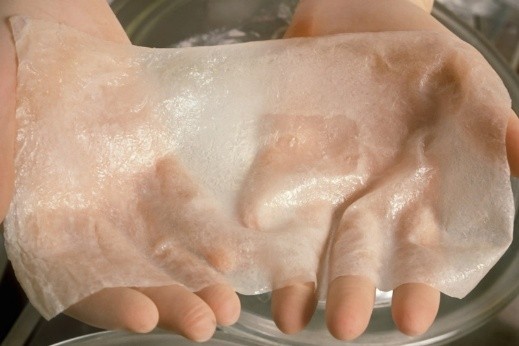
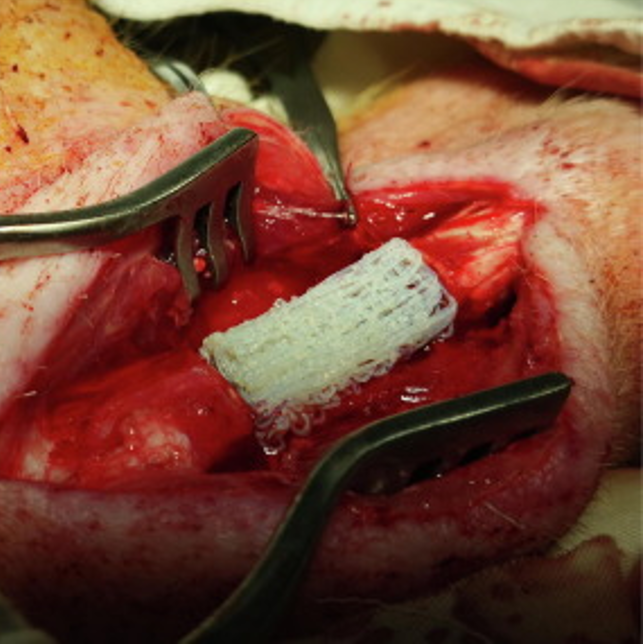
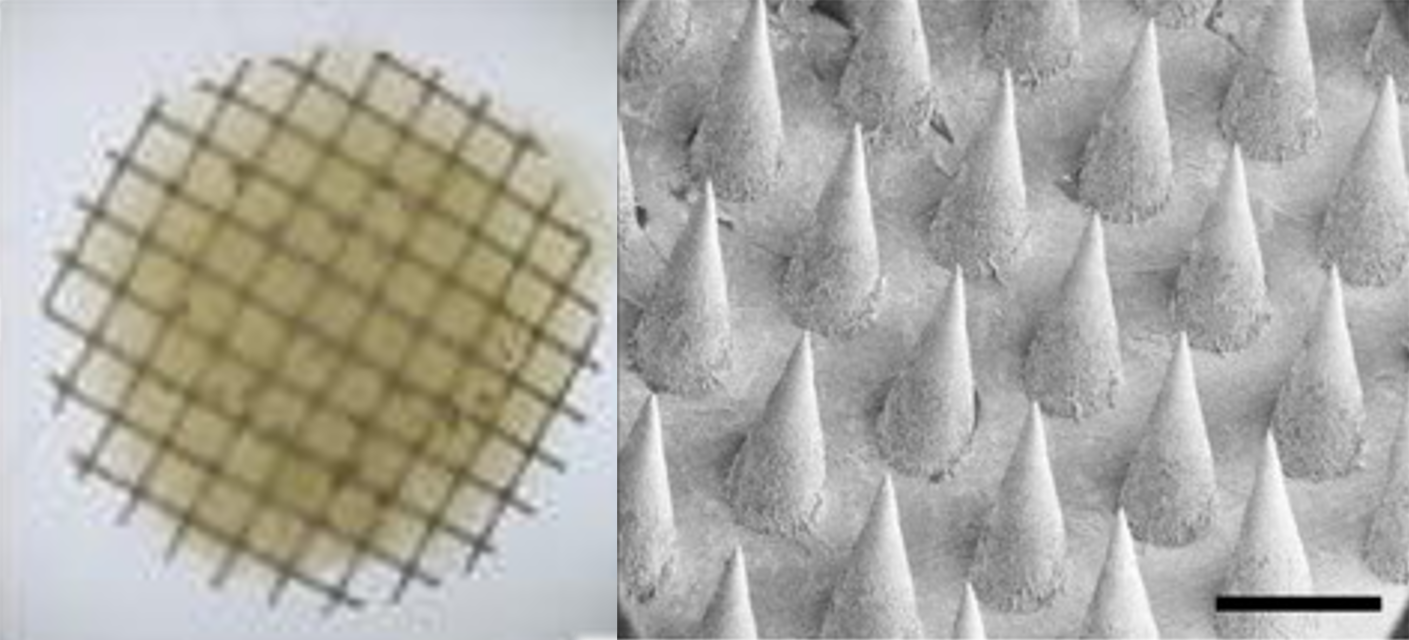
The biorobot is extremely precise, allowing printing of very detailed constructs which can be highly complex with different biomaterials added in each layer, but even greater precision can be achieved with the use of lasers. Laser can be used in two ways:
Photocuring of light sensitive materials
Laser-induced forward or side transfer of cellular material
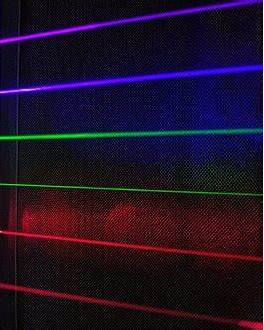 Some
biomaterials, such as gelatin
methacryloyl (GelMA) and polyethylene glycol (PEG), are photocured,
meaning that the robot can print layers of liquid onto the work zone and the
material is induced to transform to a gelatin-like consistency by exposure to
light of particular wavelengths. Using a special laser-based device that
can output any wavelength of light from the deep ultraviolet range, through the
visible wavelengths, to the dark infrared range, any light-material can be
photocured at any desired wavelength.
Some
biomaterials, such as gelatin
methacryloyl (GelMA) and polyethylene glycol (PEG), are photocured,
meaning that the robot can print layers of liquid onto the work zone and the
material is induced to transform to a gelatin-like consistency by exposure to
light of particular wavelengths. Using a special laser-based device that
can output any wavelength of light from the deep ultraviolet range, through the
visible wavelengths, to the dark infrared range, any light-material can be
photocured at any desired wavelength.
As different tissues in the human body respond to the surrounding microenvironment, the ability to cure various materials to achieve particular tensile strengths and other characteristics is critical to the success of any bioprinted material in a clinical setting.
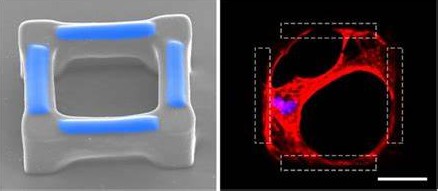 The
other use of laser technology is to print extremely detailed constructs such as
the image shown at the right. In this work the laboratory used a digital
projection method to create small scaffolds upon which a layer of GelMA was
deposited (area shown in blue) to guide cell adhesion, resulting in tunable
biochemical and structural properties for the scaffold.
The
other use of laser technology is to print extremely detailed constructs such as
the image shown at the right. In this work the laboratory used a digital
projection method to create small scaffolds upon which a layer of GelMA was
deposited (area shown in blue) to guide cell adhesion, resulting in tunable
biochemical and structural properties for the scaffold.
The other precision printing process becoming more common is LIFT (laser-induced forward transfer). The LIFT process, shown below, uses the laser to heat a layer of hydrogel containing living cells. The heat generated by the laser energy causes a bubble to form, similar to the bubbles that form when boiling water, and as the bubble grows it ejects cellular material to a target substrate, such as an artificial skin construct. The heating process takes place in nanosecond timescale, sufficient to eject the desired components from the hydrogel without damaging the cells themselves. The level of precision achieved is limited only by the diameter of the laser beam and the materials used, but resolutions on the order of 10 microns have been achieved.
